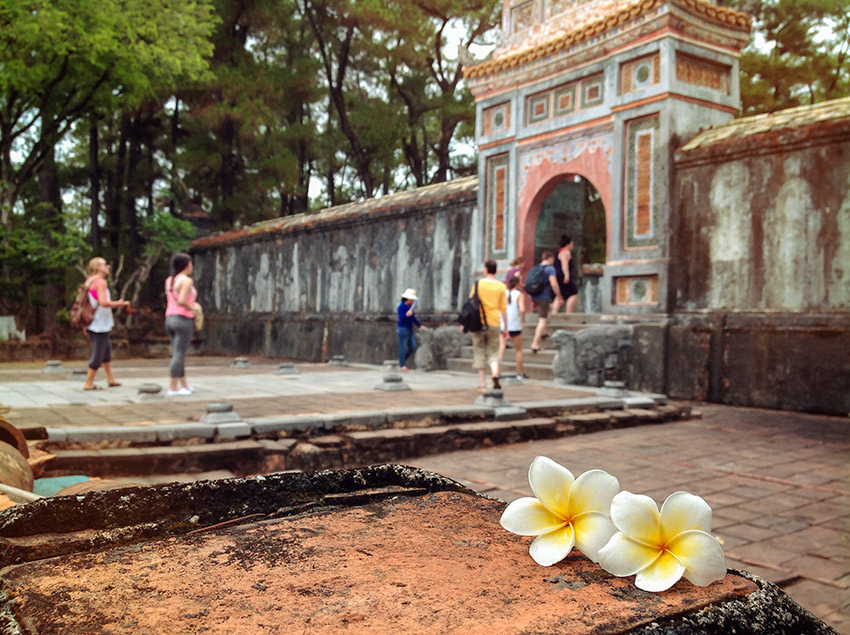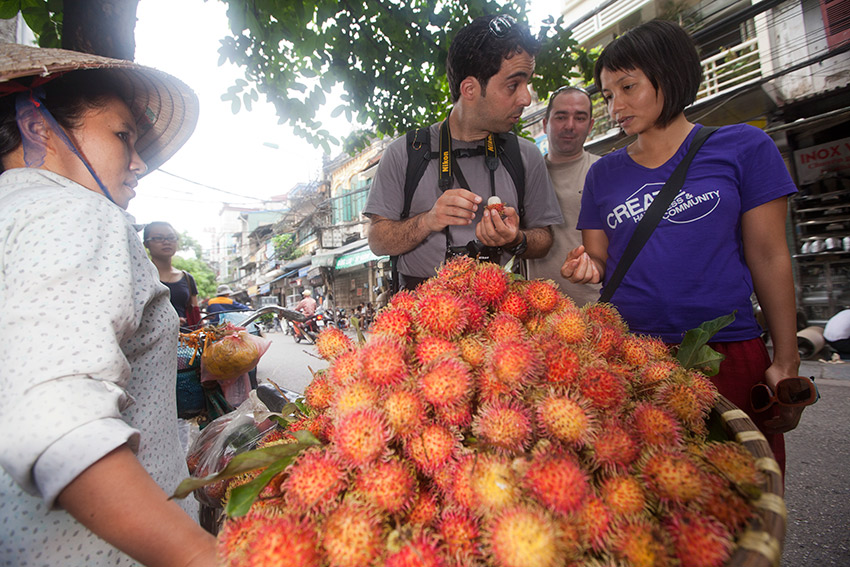A Westerner raised on post-Vietnam war propaganda, the thing that surprised me most upon arrival in Hanoi was the rampant consumerism. I’d pictured an austere Soviet-style communism; instead, there were shopping malls and thriving markets and 20-somethings on scooters dressed in designer labels.
“Right, of course, they make a lot of our stuff here.” I was vaguely relieved by this recollection; my luggage had gone missing on the journey over. A short walk around the nearest market district revealed I’d be able to replace just about everything. This turned out not to be necessary; my bag appeared 24 hours later, but it was nice to know it would not have been a problem. Nicer still to have my preconceptions shattered on day one in the country.
Vietnam’s bustling modernity surprised me constantly. English is prevalent with the country’s youthful population, as is ambition and curiosity. “I’m studying IT,” said the waiter who served my coffee on my first day in country. “So I need to learn English, too.” While history still runs deep, the country doesn’t feel traditional or stodgy — it’s an exciting place to travel with outstanding food, terrific shopping and thousands of years of rich culture.
Here’s a backgrounder for your upcoming journey, but don’t be shy about asking locals to help you fill in the blanks.
A few historical checkpoints
Halong Bay
Limestone karsts (large rock outcroppings) populate the protected waters of Halong Bay. Cruising the waters on a red-sailed junk boat is a highlight of any trip to Vietnam. But the bay isn’t just photogenic; prehistoric humans occupied caves along the bay as early as 18,000 BC.

The karsts make the landscape of Halong Bay dynamic.
Ho Chi Minh City… or is it Saigon?
You’ll still hear both while travelling in Vietnam; it’s more proper to use the name Ho Chi Minh City. The city — the largest in Vietnam — was known as Saigon under French colonialism. In 1975, when the Central Communist Party of Vietnam took over the city, it was renamed for Ho Chi Minh, the party chairman.
Hue
Right in the middle of Vietnam (and a dangerous place to be during the Vietnam War), Hue was once home to the Imperial City, the seat of the Nguyen dynasty. Construction began here in 1804; Hue was the power centre of Vietnam until 1945. The site was damaged considerably in 1968 during the Battle of Hue, but ongoing restoration has helped return many of the buildings to their Nguyen dynasty era splendour.

Hue Royal Palace in the Imperial City.
My Son
The earliest structures at the My Son Hindu temple complex date back to the 4th century AD. The temple ruins are now tangled in overgrowth, but were once the capital of the Champa Kingdom. Like so much in Vietnam, the site was extensively damaged when American forces carpet bombed the area. Hindu gods still quietly occupy elaborately carved stone niches in the temples that survived.
Etiquette and tipping
Western manners are common in Vietnam, shaking hands, saying “hello,” that sort of thing. But there are some regional customs that will help you show you’re a respectful guest.
Finish what’s in your rice bowl
Eat every last bite; don’t leave anything left over. And when you’re done, set your chopsticks on the table next to your bowl or lay them across the top of the bowl. Don’t leave them standing upright in the bowl or in your food; that position makes your chopsticks too like the incense burned for the deceased. And let the oldest at your table partake first.
Mind where you point the camera
Though I had locals insist I snap their photos, always ask before you take someone’s picture, it’s just good manners. Be wary if you’re shooting government or military buildings, or better yet, just put the camera away until you’ve asked a guard. There’s no need to offer money for photos but do take the opportunity to be social about it! It can be a nice icebreaker.

Always ask before you take someone’s picture.
Uncover your feet and your head
Take your shoes and hat off when you visit sacred sites, but cover up what’s in between. Vietnam can be very casual about attire, and you will see woman in shorts and strappy tops, but it’s always better to err on the side of modesty. And a packing note — it can be quite cold and rainy in the north, so be prepared.
Tip your guide, not your waiter
Tipping isn’t standard in most restaurants, taxis and bars, but your guide may be used to receiving a tip if he or she works with a lot of Western travellers.
Practical concerns
Crossing the street
When I described the game of real life Frogger that is crossing the street in Ho Chi Minh City, people did not believe me. It is daunting to step out into the sea of moving traffic that swirls through urban Vietnam, but it is very survivable. Don’t hesitate to hitchhike with a local at a street light by following their heels when they step off the curb.

Speeding through the streets in Hanoi.
Bad bellies
Nearly every visitor struggles with traveller’s gut. The food in Vietnam is so bright and fresh and delicious it’s hard to say no to fresh vegetables and fruit smoothies and abundant seafood. Carry meds for your gut and be sure you’ve always got toilet paper in your pocket or day pack; it’s rarely stocked in the restrooms.

If you are going to partake in fresh fruit, one's with a peel are generally safer.
Safety
It’s still true that women need to be especially mindful when traveling alone anywhere in the world. Modest dress and comfortable shoes go a long way toward limiting hassles. Crowded markets can have pickpockets, so keep your valuables close. All that said, Vietnam is one of the safer places to travel and with common sense, you’ll have no trouble at all.
Getting There
G Adventures runs a number of departures in Vietnam encompassing a wide range of departure dates and activities to cater to different tastes. We’re thrilled at the prospect of showing you this big blue planet of ours — check out our small group trips here.























